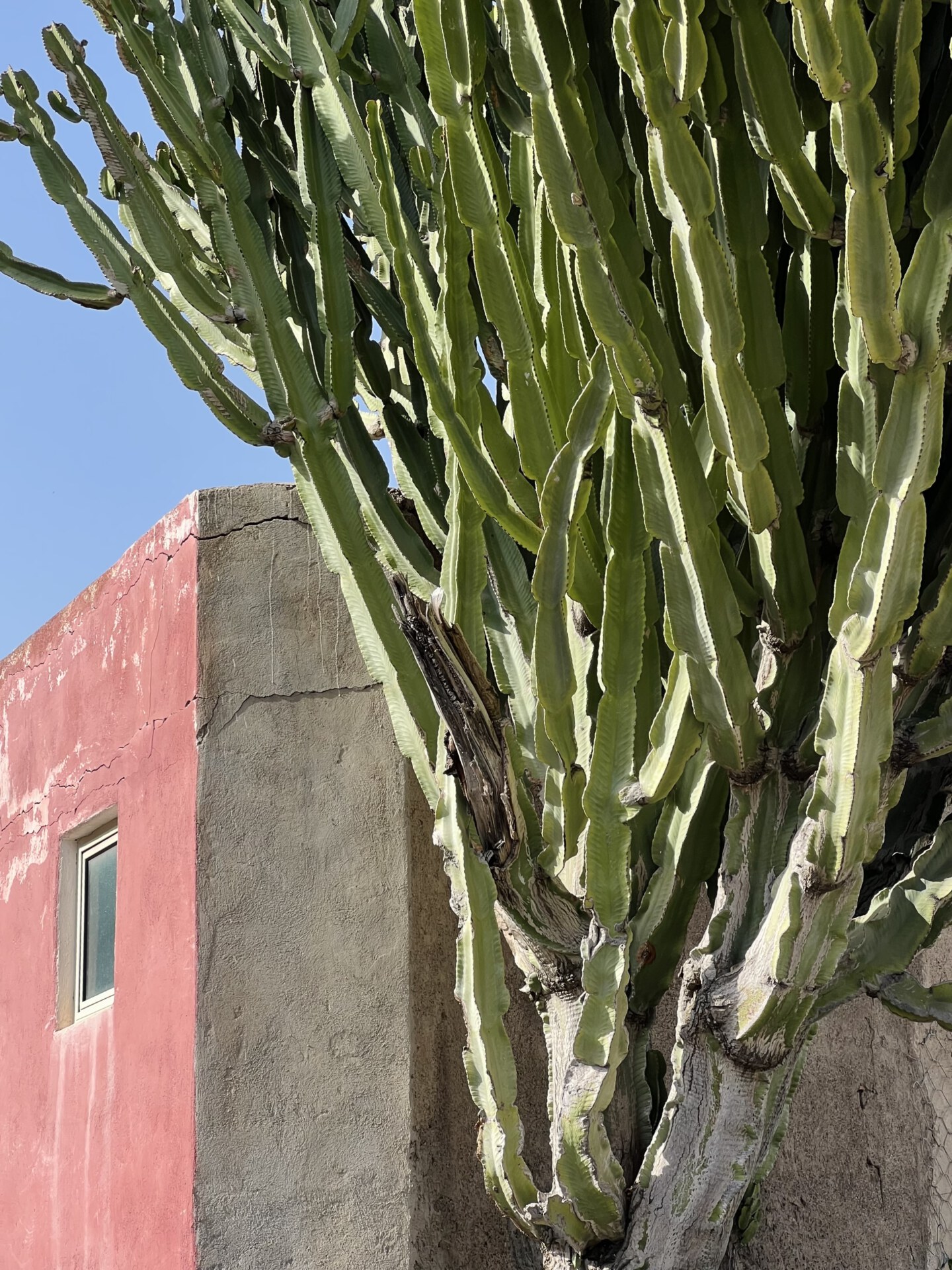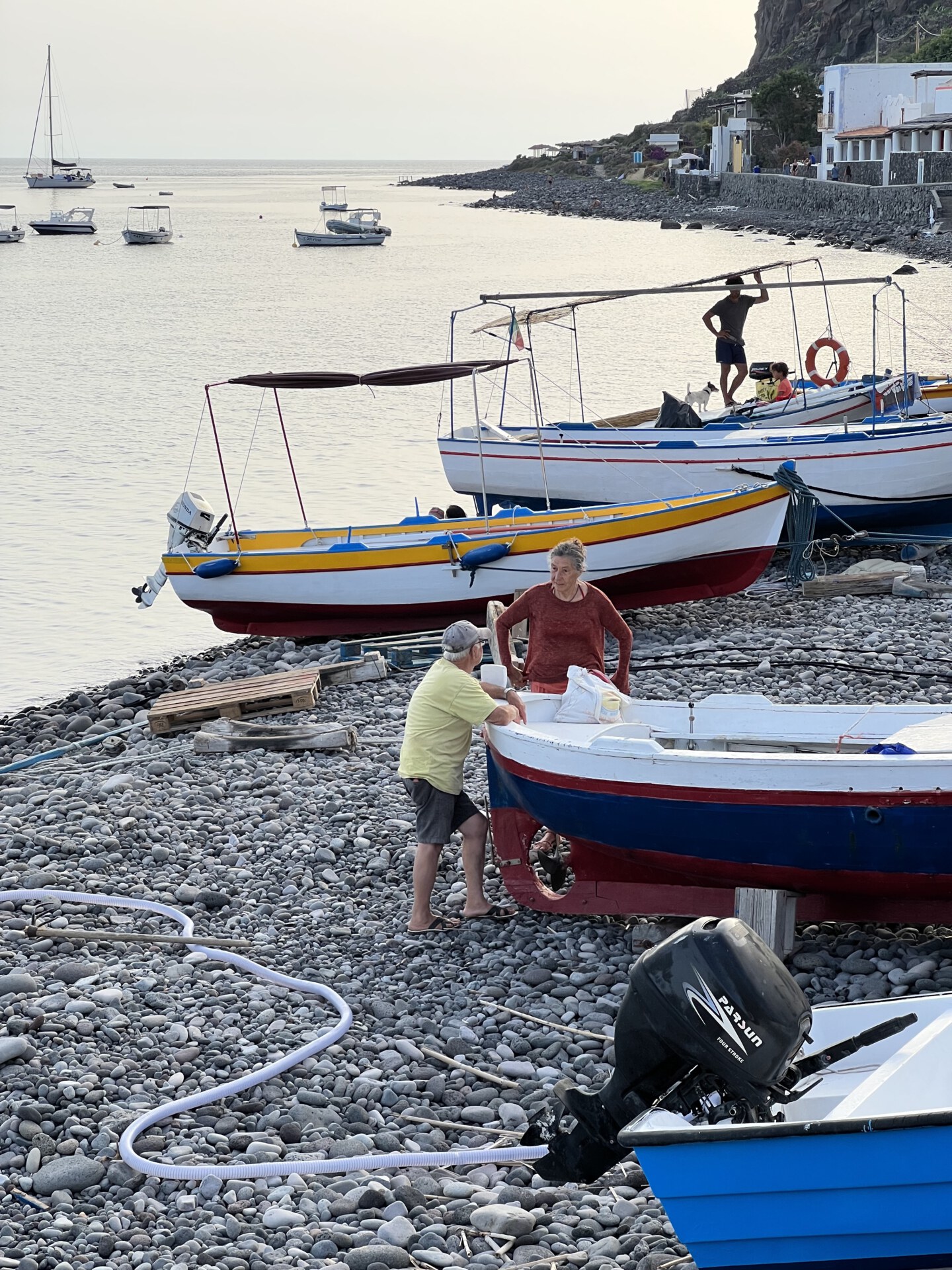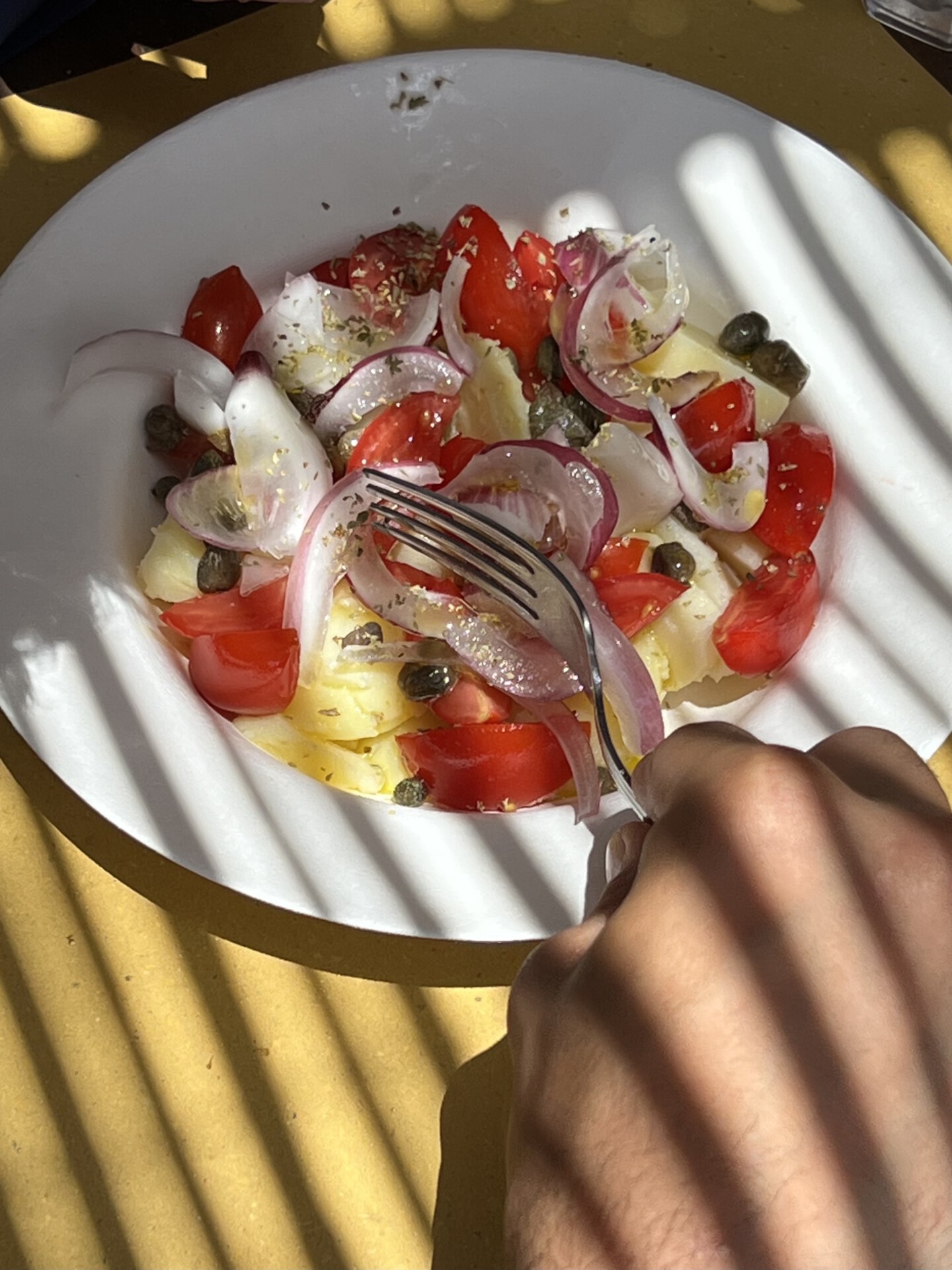Ostensibly, I’m hopping on a ferry to Sicily’s remote Aeolian Islands for a holiday: four days of sea swims, lazy pennichelle, and endless coupes of mulberry granita. This is how I pitch it to Layla, my long-suffering summer holiday companion and necessary translator when southern dialects get too thick.
Secretly though, I’ve half-written an escapade into caper territory in my mind already. I have long been obsessed with the flavor of these salty, wild little seed pods, and I’ve decided I’m going to spend long, happy afternoons scrambling through the hills picking them with local farmers in the name of research. I imagine returning home with jars of the things, ready to leave on my window ledge and then enjoy tossed through rice salads and stirred into buttered potatoes. Anyway, that’s the plan.
The Aeolians are an archipelago of Seven Sisters: Lipari, Salina, Filicudi, Alicudi, Stromboli, Vulcano, and Panarea. Before the dawn of commercial tourism, capers (and sweet Malvasia wine) were what kept the islands’ economy just about afloat. Caper bushes, recognizable by the purple-white flowers and little green buds, grow wild across the volcanic terrain, their round green leaves spurting out of cracks and crevices throughout the islands (and, in fact, much of Italy). Whether cultivated or left to their own devices, caper bushes’ drought-resistant properties are a godsend for these islands, which only received mains water a few decades ago.
Capers from the Aeolians have long been recognized as a cut above the rest, due to the unique combination of fertile volcanic soil, sea air, and long hours of sunshine. The islands also happen to be the mythical home of Aeolus, God of the Wind, who breathes warm life into everything that grows here. In ancient times, capers were used medicinally across Italy for anything from toothaches to spleen issues, trapped nerves to diuresis. According to Maurizia De Lorenzo, who runs caper cooperative Sapori Eoliani from her home on Salina, many of these theories have been confirmed by modern science. “In recent years, scientific research based on ancient knowledge has proven capers’ use in dermo-cosmetics, and specifically for the treatment of acne, psoriasis, and skin inflammation,” she says, daring anyone to defy her.
SALINA (THE GREEN ISLAND)
Our first stop is Salina, where you can find the unique, juicy, and perfectly shaped “nocellara” caper variety. I’m here to seek out Maurizia De Lorenzo herself. She has been collecting capers with her parents since the age of seven, just like her grandparents and great-grandparents before her, and with 2,500 bushes to her name, she seems to be the veritable caper source on the island.
The hydrofoil blasts out of the water from Porto di Palermo, rising up onto its two improbable water skis, and we’re away. Three hours later, the sunken volcanoes of Stromboli, Vulcano, and Salina come into focus, and we arrive in the pastel harbor of Santa Marina. I see a donkey on the beach, and can’t help but smile.
Bursting out of craggy volcanic cliffs and cracked roadside boulders, we see caper bushes everywhere. It’s June, and the flowers are in full bloom, filling the ochre landscape with their vibrant purple and white. They smell delicious too, sweet and tropical, nothing like the scent of capers themselves.
I manage to track Maurizia down just as we’re about to leave the island, and she speaks to me on the phone. Harvesting is all done by hand from April to August, so the busy season is well underway. The pickers start early, around 5 AM, to avoid the intense summer heat. On the bushes, you can see the two types of caper product growing at different stages: capperi, the small pea-shaped buds, and cucunci, sometimes translated as caper berries, which are bigger and crunchier, tasting a little like a cornichon and delicious as an aperitivo snack. “Our caper bushes are carefully cultivated and reproduced by stem cuttings, a method which is now very rare. It allows us to select the strongest plants to grow from, making our product the highest quality,” explains Maurizia.
Thanks in part to her work, Slow Food Sicily has now classified Aeolian capers as one of more than 30 Presidia products from the region–foods that are unique to a specific locality, have historical significance, and are thought to be at risk. And, bit by bit, the De Lorenzo family’s carefully cultivated capers and cucunci are becoming part of a well-known brand.


FILICUDI
I’m not yet satisfied with the caper hunt, so we hop on the aliscafo and head over to the wild and windswept little island of Filicudi for a couple of days. Here, I’m quicker off the mark.
“I hear Filicudi grows the best capers in the world,” I posit casually to Danilo, a local driver we’ve flagged down to take us to our rented room in Pecorini al Mare. We’re crammed in his minivan along with a bunch of teenagers volunteering for the turtles, and they look at me quizzically.
I get lucky and Danilo delivers, telling me about his Zio Salvatore Rando. “He’s the one you need to meet if you want to know about capers,” Danilo assures me. “He knows everything there is to know, and his capers are the best you’ll ever taste.” I bite the bait and persuade Danilo to drive us up to old Sal’s ranch in Val di Chiesa the following evening.
The house we arrive at is more like a small and marvelous hamlet, semi-derelict, the pink and white paint cracked in the sun. Salvatore and his wife, both in their late 60s, are sitting around a plastic table with a dozen friends tucking into a lavish aperitivo. They all grin when we arrive and welcome us over to try a platter of insalata Filicudara–cold new potatoes, sweet red onions, tomatoes, oil, and, of course, Sal’s capers.
Next there are green figs, squishy and ripe although it’s only June, and then we get down to business. “Do you know how capers get their roots into the rocks?” Salvatore asks us cheekily, and I look back blankly. Lizards eat the capers, then excrete their seeds inside the island’s volcanic rocks, which act as a fertilizer for the seeds to sprout and grow. This story takes several attempts for me to understand, with lizard-like hand gestures and lots of laughter as Danilo repeats “cacca, la cacca delle lucertole” (“poop, the poop of lizards”). It’s verified by some scientific papers I find online.
This is the house Salvatore and his 11 siblings were born in, and he’s never lived more than a few meters away. “Island life was hard back then,” his nephew Danilo tells us. “He had a few donkeys for going into the hills and for catching not only capers but wild rabbits too. The roads were called mulatiere, dirt tracks for mules and donkeys, long before there were cars.”
Still, Salvatore is deeply attached to his home. “If I have to leave the island for something, I run back home as soon as I can,” he tells us with a toothy smile. Once, he explains, he left for 12 days to visit his daughter; being away from the island resulted in a terrible headache, high blood pressure, and his skin breaking out in blotches.
Salvatore brings us up onto the rooftop of the concrete bungalow, and it’s not hard to understand why he loves it. To one side, the sun is setting over Stromboli, Salina, Vulcano, and Lipari, the shores of Messina lighting up in the far distance. To the other side, we see the hills where he still scrambles, mostly alone, harvesting capers.
Some farmers soak their capers before salting, but Salvatore follows the methods of his ancestors and skips this stage. Instead, he puts them in large wooden barrels with plenty of coarse salt, turning the barrels daily and changing the salt when needed. After a month, they’re ready to eat, the worst of the bitter tannins drawn out by the salt, and he sells a few bags to passers-by when he can. Almost like my wholesome vision, I leave with a carrier bag full of just-ready capers. They impart their acrid smell on all my clothes for the rest of the trip.
Purists will say that to de-salt the capers before eating, they should be soaked in lukewarm water for exactly twelve hours “to enjoy their unmistakable taste fully.” For Salvatore however, it’s enough to brush off the rough crystals of damp salt and pop them straight into his mouth.
Recipes from Sapori Eoliani (for best results, use Aeolian capers):
BRUSCHETTA SAPORI EOLIANI
Serves 4
INGREDIENTS
- 500 g of Castelvetrano black bread (or other naturally leavened bread)
- 200 g of cherry tomatoes
- 1 clove of garlic
- Extra virgin olive oil
- Salt and pepper, to taste
- Peperoncino, optional
- Antipasto Eoliano (a mix of capers, cucunci, sun-dried tomatoes, and wild fennel)
PREPARATION
- Cut the cherry tomatoes in half, and put them in a bowl with the oil, the garlic clove, and a pinch of salt and pepper, and the peperoncino, if using. Place in the refrigerator.
- Cut the bread into slices about 2 cm thick.
- Toast the bread on both sides on a hot cast iron plate or on a preheated grill pan.
- As soon as all the slices are toasted, season them with the cherry tomatoes and a spoonful of Antipasto Eoliano. Serve.
INSALATA DI CAPPERI
Serves 4
INGREDIENTS
- Large salted capers
- 2 cloves garlic
- Mint
- Breadcrumbs
- Raisins (optional)
- Extra virgin olive oil
- White wine vinegar
PREPARATION
- De-salt the capers by soaking in water. Squeeze them gently to remove excess water and place them in a bowl.
- Season with finely chopped garlic, fresh mint leaves, and raisins, if using.
- Add a sprinkling of breadcrumbs and dress with extra virgin olive oil and a splash of vinegar. Serve cold.













